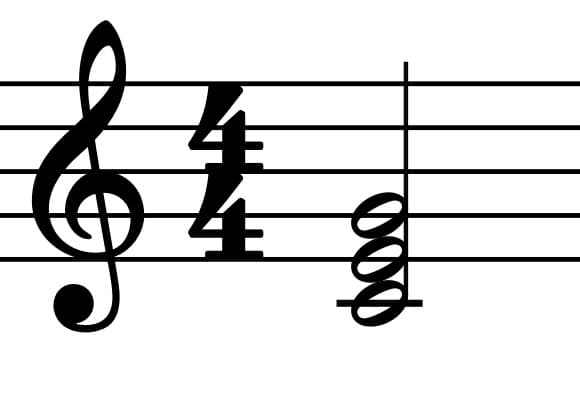Myths about teaching can hold you back
- Year 10
- Edexcel
Combining melody and harmony
I can compose a melody that fits with my chord sequence, including the use of passing notes.
- Year 10
- Edexcel
Combining melody and harmony
I can compose a melody that fits with my chord sequence, including the use of passing notes.
These resources will be removed by end of Summer Term 2025.
Switch to our new teaching resources now - designed by teachers and leading subject experts, and tested in classrooms.
These resources were created for remote use during the pandemic and are not designed for classroom teaching.
Lesson details
Key learning points
- Melody and harmony must use some of the same notes to sound musically coherent.
- Chord tones should form the basis of a melody.
- Passing notes can make a melody interesting and more ‘melodic’ by creating conjunct movement.
- Melodies should still follow a recognisable or repeated phrase pattern.
Keywords
Chord tone - any note that is included in a chord (e.g. a C chord has the chord tones C, E and G)
Phrases - a short section of a melody, often lasting 1, 2 or 4 bars
Passing notes - a non-chord tone that links two chord tones by step
Conjunct - a conjunct melody has small changes in pitch between one note and the next (moving by ‘step’)
Common misconception
A melody must be completely conjunct.
This is not true - great melodies often use disjunct movement. However, when learning to compose melodies, sticking to mostly conjunct movement and small intervals helps them to sound melodic.
To help you plan your year 10 music lesson on: Combining melody and harmony, download all teaching resources for free and adapt to suit your pupils' needs...
To help you plan your year 10 music lesson on: Combining melody and harmony, download all teaching resources for free and adapt to suit your pupils' needs.
The starter quiz will activate and check your pupils' prior knowledge, with versions available both with and without answers in PDF format.
We use learning cycles to break down learning into key concepts or ideas linked to the learning outcome. Each learning cycle features explanations with checks for understanding and practice tasks with feedback. All of this is found in our slide decks, ready for you to download and edit. The practice tasks are also available as printable worksheets and some lessons have additional materials with extra material you might need for teaching the lesson.
The assessment exit quiz will test your pupils' understanding of the key learning points.
Our video is a tool for planning, showing how other teachers might teach the lesson, offering helpful tips, modelled explanations and inspiration for your own delivery in the classroom. Plus, you can set it as homework or revision for pupils and keep their learning on track by sharing an online pupil version of this lesson.
Explore more key stage 4 music lessons from the Fundamentals of composition unit, dive into the full secondary music curriculum, or learn more about lesson planning.

Equipment
A DAW, notation software, a keyboard or other suitable instrument that can be used as a composition tool.
Licence
Prior knowledge starter quiz
6 Questions
Q1.A __________ chord is a standard chord with three notes.
Q2.In this C major chord, which note is the root note?

Q3.We would describe this chord as being in __________.




